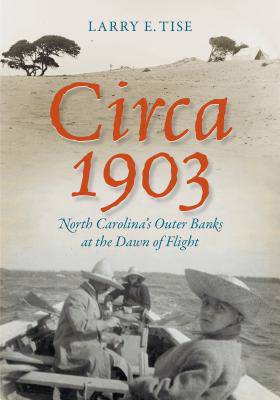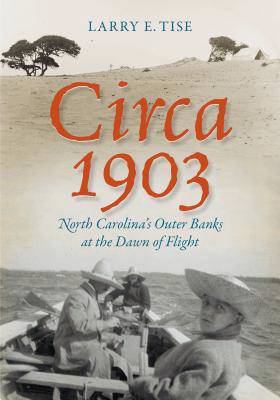
- Afhalen na 1 uur in een winkel met voorraad
- Gratis thuislevering in België vanaf € 30
- Ruim aanbod met 7 miljoen producten
- Afhalen na 1 uur in een winkel met voorraad
- Gratis thuislevering in België vanaf € 30
- Ruim aanbod met 7 miljoen producten
Zoeken
€ 30,95
+ 61 punten
Omschrijving
Standing along the coast of today's Outer Banks, it can be hard to envision the barrier island world at Kitty Hawk as it appeared to Wilbur and Orville Wright when they first arrived in 1900 to begin their famous experiments leading to the world's first powered flight three years later. Around 1903, the islands and inland seas of North Carolina's coast were distinctive maritime realms--seemingly at the ends of the earth. But as the Wrights soon recognized, the region was far more developed than they expected.
This rich photographic history illuminates this forgotten barrier island world as it existed when the Wright brothers arrived. Larry E. Tise shows that while the banks seemed remote, its maritime communities huddled near lighthouses and lifesaving stations and busy fisheries were linked to the mainland and offered precisely the resources needed by the Wrights as they invented flight. Tise presents dozens of newly discovered images never before published and others rarely seen or understood. His book offers fresh light on the life, culture, and environment of the Carolina coast at the opening of the twentieth century, an era marked by transportation revolutions and naked racial divisions. Tise subtly shows how unexplored photographs reveal these dramatic changes and in the process transforms how we've thought of the Outer Banks for more than a century.
This rich photographic history illuminates this forgotten barrier island world as it existed when the Wright brothers arrived. Larry E. Tise shows that while the banks seemed remote, its maritime communities huddled near lighthouses and lifesaving stations and busy fisheries were linked to the mainland and offered precisely the resources needed by the Wrights as they invented flight. Tise presents dozens of newly discovered images never before published and others rarely seen or understood. His book offers fresh light on the life, culture, and environment of the Carolina coast at the opening of the twentieth century, an era marked by transportation revolutions and naked racial divisions. Tise subtly shows how unexplored photographs reveal these dramatic changes and in the process transforms how we've thought of the Outer Banks for more than a century.
Specificaties
Betrokkenen
- Auteur(s):
- Uitgeverij:
Inhoud
- Aantal bladzijden:
- 240
- Taal:
- Engels
Eigenschappen
- Productcode (EAN):
- 9781469651149
- Verschijningsdatum:
- 27/05/2019
- Uitvoering:
- Paperback
- Formaat:
- Trade paperback (VS)
- Afmetingen:
- 175 mm x 244 mm
- Gewicht:
- 430 g

Alleen bij Standaard Boekhandel
+ 61 punten op je klantenkaart van Standaard Boekhandel
Beoordelingen
We publiceren alleen reviews die voldoen aan de voorwaarden voor reviews. Bekijk onze voorwaarden voor reviews.











